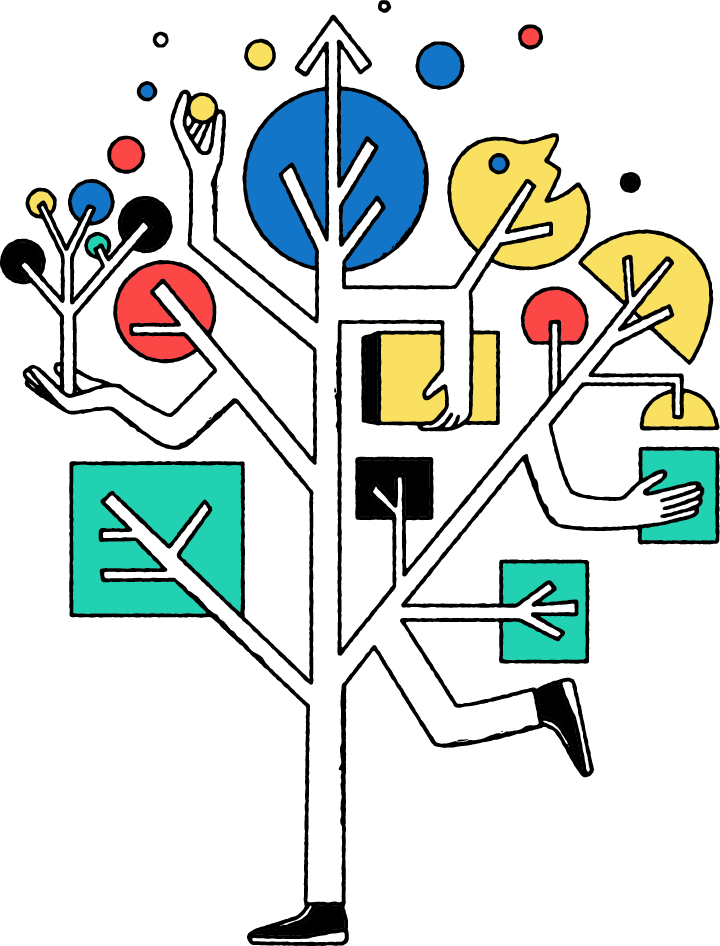Executive Summary
Conversational AI is offering new ways for consumers to interact with their banks or their finance. Therefore financial institutions have to reimagine and reinvent their offering, services, and processes to address these new use cases.
We discuss with our panelists some of the tactics and techniques they have been using to embrace the new trends of Conversational AI.
Some Key insights
- IVR is one of the leading trends in conversational AI in banking
- Banks can experiment internally by leveraging their large pool of employees
- Metrics and KPIs can be outlined to make a case to stakeholders
Meet Our Panelists

Jen Serdetchnaia
Product Design Lead, Scotiabank
Jen’s work has most recently focused on Help and Search, in support of banking customers who encounter a problem or challenge with a Scotiabank product or service. She also has experience with chatbot design across industries.

Emanuel TOSTE
Sr UX Manager, Conversational & Service Design Strategy, BMO
Typography is the art and technique of arranging type to make written language legible, readable and appealing when displayed. The arrangement of type involves selecting typefaces, point size, line length, line-spacing (leading), letter-spacing (tracking), and adjusting the space within letters pairs (kerning).

David BEILIS
Technical Lead Manager, Capital One
David is a tech enthusiast and thrives in building frictionless and personalized experience for customers. David has a lot of experience with Voice technology, from the voice assistants that many of us interact with to the less public familiar IVR.

Zach FEJES
Team LeaD Voice Lab, RBC
Zach is an entrepeneur who has founded several companies and is now focusing on voice interfaces and how they could be used to solve real world problems.
We Thank Them For Supporting This Event

Connected is an end-to-end product delivery firm. With a mission of building better products fro their clients, Connected brings together the best in agile software development, human-centred design, and product and business strategy, making sure that insight feeds execution at every possible step.
Check out their services here.

Watch The Event
Event Q&A
Do you think customers will naturally transition into using voice within the banking industry? Or do you think they're a potential barrier? When it comes to changing people's habits and perceptions?
Emanuel: You have to provide a choice. I think certain people are not going to want to gravitate to one channel because of either trustworthy trust factors or whatnot. I think even with the IVR systems, for instance, like we have conversational in place, but we do definitely also have a fallback touch tone version and plays because sometimes people just don't want to spit out things in public. So we have to consider privacy issues and being able to navigate in other means. So I think it's all about understanding the needs of the user providing options that would be highly likely in that scenario, and giving them those options to really navigate themselves. I think if you start limiting, you're just going to detract people from using the technology itself.
Do you currently user test the tone of voice of conversational interfaces? What guides the personality of the chatbot that interact with customer today?
David: Getting into tone, it's probably basically the styling of the voice within the voice conversation. I think it's quite an advanced topic that gets the small adoption into our voice interfaces. I think many of the Google Home and Alexa interfaces enjoy some of the capabilities. I can comment about what we do what we don't, but it's definitely something groundbreaking, that many should look into. It gets into with synthetic voices into branding, that basically associated with the tone and pose and how fast you speak and all those items, we can definitely customize the voice experience and mimic how people speak to look at more human.
David: When we talk about personality, there are lots of aspects and they all related to branding and the image from the creator's perspective that we want to create behind the company and how we want the customers to perceive the different social aspects that might be included here. So for example, gender agnostic, so do we want to perceive the bot to be female or male? How do we want to perceive them? We want that creature or identity to be playful, but at the same time may be serious because it's a financial institution. And there are many aspects of it mentioned in what we consider to be personality.
Tim: How do you handle accessibility to non-native English speakers in a city as diverse as Toronto? How do you rich people who aren't proficient in English? So who wants to pick that
Zachary: So the short answer is you're absolutely right, Tim, a lot of the vendors out there are making available tools to make it easier and easier to do either multilingual or different linguistic backgrounds, for voice applications.
Zachary: And I think that our research into it has shown so far, that implementation isn't going to be much more difficult between languages. On the purely technical level, on a design level, there are going to be differences and I think that's based on The different languages available.
Zachary: For example, if you're speaking, a Latin derivative, the way in which we talk about things is going to be a little different than if you were speaking, something a little more Cyrillic, like in the different languages each have different ways of describing the same thing.
Zachary: And I think a part that comes to this as well, is the way emotions are understood, because our voices carry a lot of emotion. But it actually has a hugely regional and generally social component to it, where they don't necessarily have the same markers globally.
Zachary: And it means that you have to consider slightly different things that go a little bit beyond the language but more as to where the languages come from, and the cultures they come from, because there are different things you can interpret from it.
How do we inform the users what the capabilities of the voice assistant chatbots are so that the users know what to expect?
Jen: I think you'll see this across a lot of there's almost a pattern that's been established, across at least chat I can speak to it as it's quite common for when the virtual assistant identifies something themselves, they just say "I can tell you about a or b, or c" and they'll give you broad topics that you're then able to dig in into. A good assistant will also, once you use your natural language to say: "I actually want to talk about is international money movement available to send money to Spain", the Assistant would be able to understand and then actually give you more topics in that range.
Jen: I think what's been really great about kind of stepping away from this specific to chatbot and voice projects and going into the search project is it's working very closely with the kinds of architecture that are built in order to support infrastructures like that. So something that I've gotten really familiar with over the past year is: How do you surface up? How do you connect related articles or related content and chatbots work very much in that same way? It's essentially giving a limited number of options, and then providing related content, for voice actually can't speak as much too but I mean, from my observation from my experience with the voice farm We did it the same way. But I wonder if there is something better than then that.
Jen: I also unfortunately or fortunately think marketing often has a lot to do with it, right. Like, we often talk about this at Scotiabank, it's like part of the work is definitely like creating a great product with that old thinking around, you know, build it, and they'll come. But that's not exactly how people work, right? Build it set the expectation doing a marketing campaign, you know, explain to them what this does frame it for them, and then they'll come and use it properly. So I think the actual ecosystem of promotion is also a piece around it.
Curated Resources By Voice Tech Global
Conversational AI Banking Applications
Capitol One Alexa Skill (US only)
CapitAl One ENO
Story: Post by Margaret Mayer, VP Software engineering on how ENO was built.
Podcast: A longer conversation about ENO from Margaret Mayer with Voicebot.ai
